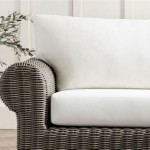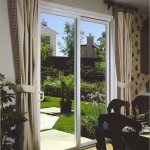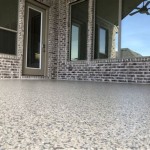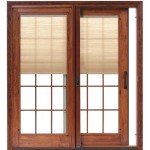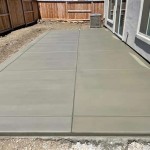Custom Patio Umbrella With Logo: Enhancing Brand Visibility and Outdoor Ambiance
Custom patio umbrellas with logos represent a strategic blend of marketing prowess and practical utility. These umbrellas, often deployed in outdoor spaces such as restaurant patios, cafes, and corporate events, serve as highly visible branding platforms while simultaneously offering shade and weather protection to patrons and guests. The integration of a company logo onto a patio umbrella transforms a functional item into a valuable marketing asset, capable of generating brand awareness and reinforcing brand identity.
The effectiveness of a custom patio umbrella with a logo stems from its inherent visibility. Positioned in high-traffic outdoor areas, these umbrellas capture the attention of a broad audience, including potential customers, passersby, and event attendees. Unlike static signage, a patio umbrella offers a dynamic visual presence, moving slightly in the wind and adapting to changing light conditions, thereby increasing its visual impact. Furthermore, the presence of a logo on a functional item subtly associates the brand with positive attributes such as comfort, relaxation, and hospitality.
The process of creating a custom patio umbrella with a logo involves several key considerations, from design and material selection to printing techniques and umbrella construction. Understanding these factors is crucial for ensuring that the final product effectively represents the brand and withstands the rigors of outdoor use. The overall goal is to create an umbrella that is both visually appealing and durable, serving as a long-term marketing investment rather than a short-lived promotional item.
Key Point 1: Design and Branding Considerations
The design phase of a custom patio umbrella with a logo is critical for maximizing its marketing impact. This involves carefully considering the logo placement, size, and color scheme, as well as the overall aesthetic of the umbrella. A well-designed umbrella should seamlessly integrate the brand logo without appearing overly intrusive or distracting. The logo should be easily recognizable and legible from a distance, ensuring that it effectively communicates the brand message to the target audience.
Logo placement is a key design element. Common locations include the center of the umbrella canopy, the valance (the fabric strip hanging around the edge), or a combination of both. Placing the logo in the center provides maximum visibility, while incorporating it into the valance can offer a more subtle and sophisticated branding approach. The size of the logo should be proportional to the overall size of the umbrella and the surrounding environment. A logo that is too small may be difficult to see, while a logo that is too large can appear overwhelming and detract from the overall aesthetic.
Color selection is another important consideration. The colors used in the logo and the umbrella fabric should complement each other and align with the brand's overall color palette. Using contrasting colors can help to make the logo stand out, while using complementary colors can create a more cohesive and visually appealing design. It is also essential to consider the impact of sunlight on the colors, as some colors may fade or change appearance when exposed to prolonged sunlight.
The overall aesthetic of the umbrella should also reflect the brand's personality and target audience. A sleek and modern design may be appropriate for a technology company, while a more traditional and classic design may be suitable for a restaurant or café. Incorporating patterns, textures, or other design elements can further enhance the visual appeal of the umbrella and reinforce the brand's identity.
Beyond the logo itself, other design elements can contribute to the overall branding effect. For example, incorporating the company's tagline or website address can provide additional information and encourage potential customers to learn more about the brand. Using custom fabric patterns or incorporating unique design features can also help to differentiate the umbrella from generic options and reinforce the brand's distinctive identity.
Key Point 2: Material Selection and Durability
The choice of materials for a custom patio umbrella with a logo is crucial for ensuring its durability and longevity. The umbrella canopy, frame, and base must be able to withstand the elements, including sunlight, wind, rain, and temperature fluctuations. Selecting high-quality materials and construction techniques is essential for creating an umbrella that can provide years of reliable service.
The canopy material is typically made from polyester, olefin, or acrylic fabric. Polyester is a cost-effective option that offers good resistance to fading and water damage. Olefin is a more durable option that is highly resistant to fading, mildew, and staining. Acrylic fabric, such as Sunbrella, is the most premium option, offering exceptional resistance to fading, water damage, and mildew, as well as a luxurious look and feel. The choice of canopy material will depend on the budget, the expected usage conditions, and the desired level of performance.
The umbrella frame is typically made from aluminum, steel, or wood. Aluminum is a lightweight and rust-resistant option that is ideal for portable umbrellas. Steel is a stronger and more durable option that is suitable for larger and more permanent installations. Wood offers a classic and elegant look, but it requires more maintenance to prevent rotting and warping. The frame should be sturdy enough to withstand wind gusts and other weather conditions.
The umbrella base provides stability and prevents the umbrella from tipping over. Bases are typically made from concrete, metal, or plastic. Concrete bases are the heaviest and most stable option, but they can be difficult to move. Metal bases are lighter and more portable, but they may not be as stable as concrete bases. Plastic bases can be filled with sand or water to add weight and stability.
In addition to the main components, other factors can contribute to the durability of the umbrella. Reinforced stitching, rust-resistant hardware, and UV-resistant coatings can help to protect the umbrella from damage and extend its lifespan. Regular maintenance, such as cleaning the canopy and tightening the screws, can also help to keep the umbrella in good condition.
Key Point 3: Printing Techniques and Logo Application
The method used to apply the logo to the umbrella canopy is a critical factor in determining the visual impact and durability of the branding. Several printing techniques are commonly used, each with its own advantages and disadvantages. The choice of printing technique will depend on the complexity of the logo, the type of fabric used for the canopy, and the desired level of durability.
Screen printing is a popular and cost-effective option for applying logos to umbrella canopies. This technique involves using a stencil to transfer ink onto the fabric. Screen printing is well-suited for logos with simple designs and solid colors. It offers good durability and is resistant to fading and cracking. However, screen printing may not be suitable for logos with complex gradients or intricate details.
Digital printing is a more versatile option that allows for the reproduction of complex logos with gradients, photographs, and intricate details. This technique involves using a digital printer to directly apply ink to the fabric. Digital printing offers excellent color accuracy and can produce high-resolution images. However, digital printing may not be as durable as screen printing, and the colors may be more prone to fading over time.
Dye sublimation is a technique that involves printing the logo onto a special transfer paper and then using heat and pressure to transfer the design onto the fabric. Dye sublimation offers excellent color vibrancy and durability, as the ink is embedded directly into the fabric fibers. This technique is well-suited for logos with photographic images and complex designs. However, dye sublimation is typically more expensive than screen printing or digital printing.
Embroidery is a technique that involves stitching the logo directly onto the fabric using colored threads. Embroidery offers a premium and durable look, but it is typically more expensive than other printing techniques. Embroidery is well-suited for logos with simple designs and bold colors. However, embroidery may not be suitable for logos with intricate details or gradients.
The application of the logo should be done carefully and precisely to ensure that it is aligned correctly and that the colors are accurate. The printing technique should be chosen based on the specific requirements of the logo and the desired level of durability. Regular inspection of the logo can help to identify any signs of wear or fading, allowing for timely repairs or replacements.
Through a careful consideration of design, materials, and printing techniques, a custom patio umbrella with a logo can evolve from a simple shade provider into a powerful tool for brand enhancement, creating lasting impressions on customers and contributing to a positive brand image.

Custom Patio Umbrella 6 Panel Market Lookourway

Promotional Vented 84 Strombergbrand Patio Umbrella

Top Considerations For Custom Patio Umbrellas Boelter

Custom Market Umbrellas For Your Outdoor Branding Needs

7 Ft Custom Printed New Steel Market Patio Umbrellas

Custom Patio Umbrella 4 Panel Market Lookourway

Two Color Custom Umbrella Square Graphic And Frame Combo Black Top

Square Market Patio Umbrella 8 Ft Arc

Outdoor Umbrellas With Custom Printed Logo Branded Canopy Tents

Custom Printed Patio Umbrellas Free Shipping Oh My Print Solutions


